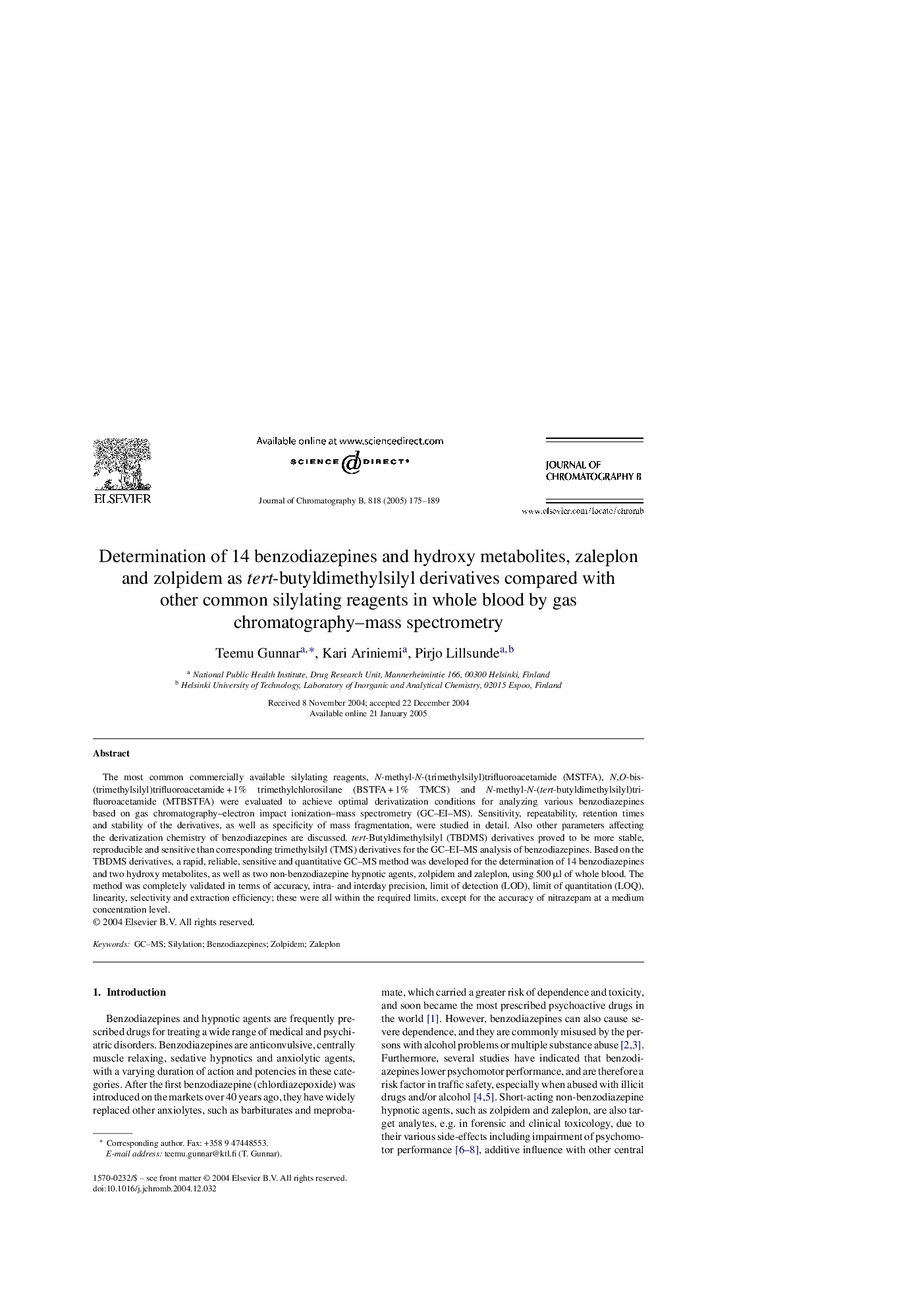| Article ID | Journal | Published Year | Pages | File Type |
|---|---|---|---|---|
| 10551188 | Journal of Chromatography B | 2005 | 15 Pages |
Abstract
The most common commercially available silylating reagents, N-methyl-N-(trimethylsilyl)trifluoroacetamide (MSTFA), N,O-bis-(trimethylsilyl)trifluoroacetamide + 1% trimethylchlorosilane (BSTFA + 1% TMCS) and N-methyl-N-(tert-butyldimethylsilyl)trifluoroacetamide (MTBSTFA) were evaluated to achieve optimal derivatization conditions for analyzing various benzodiazepines based on gas chromatography-electron impact ionization-mass spectrometry (GC-EI-MS). Sensitivity, repeatability, retention times and stability of the derivatives, as well as specificity of mass fragmentation, were studied in detail. Also other parameters affecting the derivatization chemistry of benzodiazepines are discussed. tert-Butyldimethylsilyl (TBDMS) derivatives proved to be more stable, reproducible and sensitive than corresponding trimethylsilyl (TMS) derivatives for the GC-EI-MS analysis of benzodiazepines. Based on the TBDMS derivatives, a rapid, reliable, sensitive and quantitative GC-MS method was developed for the determination of 14 benzodiazepines and two hydroxy metabolites, as well as two non-benzodiazepine hypnotic agents, zolpidem and zaleplon, using 500 μl of whole blood. The method was completely validated in terms of accuracy, intra- and interday precision, limit of detection (LOD), limit of quantitation (LOQ), linearity, selectivity and extraction efficiency; these were all within the required limits, except for the accuracy of nitrazepam at a medium concentration level.
Related Topics
Physical Sciences and Engineering
Chemistry
Analytical Chemistry
Authors
Teemu Gunnar, Kari Ariniemi, Pirjo Lillsunde,
